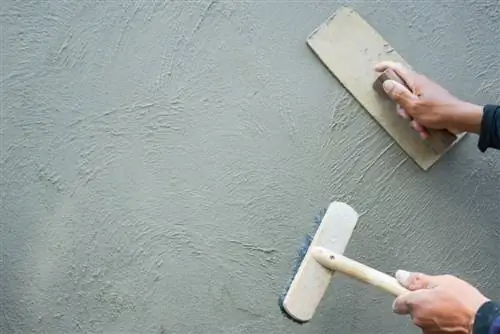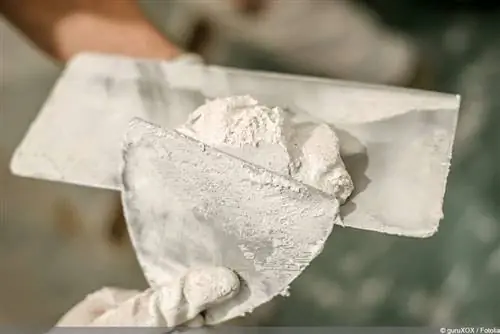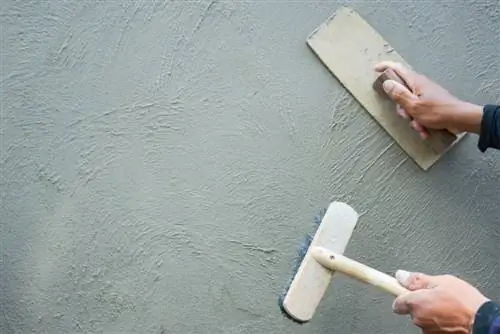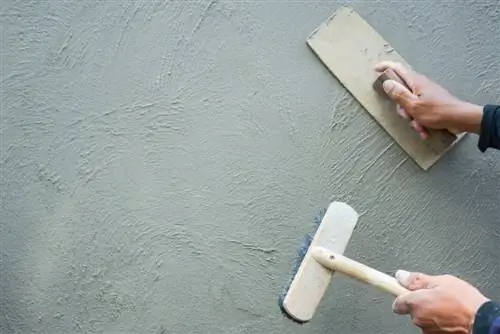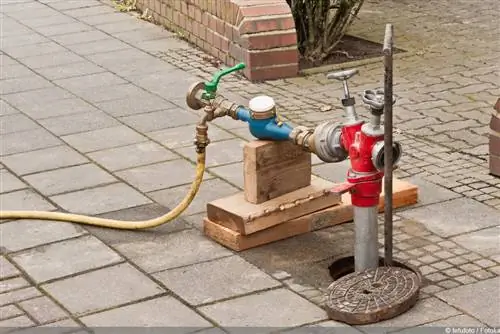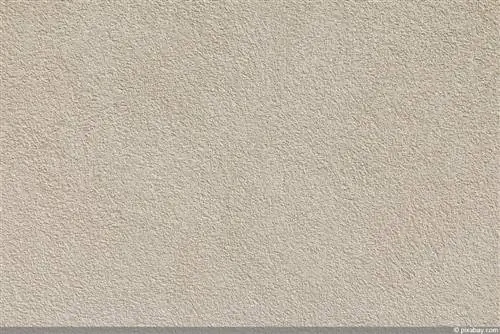- Author admin [email protected].
- Public 2023-12-17 03:39.
- Last modified 2025-01-24 12:45.
Mineral plaster is a wonderful option for plastering interior and exterior walls because it has several advantages. These include, among other things, the high water absorption capacity and breathability. Both can have a positive effect on the indoor climate. It also offers a wide variety of decoration options and can often be painted over to give rooms or facades a new look.
Advantages
The mineral plaster has numerous advantages. Below:
- breathable
- moisture-resistant
- receptive
- insulating and insulating against heat
- comparatively inexpensive
- various design options
- can be painted over multiple times
- free from preservatives and solvents
- easy to apply
- positive influence on room acoustics
The clear advantage of mineral plaster is that it can promote a pleasant indoor climate. It neither releases dangerous substances into the room air nor does it cause moisture to build up. Since it can absorb moisture and slowly release it again, it regulates the room climate to a certain extent. This can have a huge impact on well-being. In addition, mineral plasters have a good insulating effect. Due to their large pores, a lot of warm air can be retained. On the one hand, this insulates against the cold from outside, but also promotes the evaporation of absorbed moisture.
Selection
There is a fairly large selection of different mineral plasters. However, they always consist of three basic components: binders, admixtures (mineral) and additives for special functions. These can be the following substances:
- Binders, such as clay, cement, lime-cement, burnt clay, building lime, plaster
- Mineral admixtures, such as natural stone powder, sand or granules
- Additives for special functions, such as air entrainment agents for improved thermal insulation, adhesion improvers for plastering on difficult substrates, solidification influencers or sealants for binder admixture combinations that need to be additionally influenced
Stir
In contrast to silicone resin plasters, for example, mineral plasters are usually offered in dry matter and have to be mixed and used comparatively quickly. This is a potential disadvantage because it means a little more effort and requires relatively good planning when plastering.
Vote
So that the plaster has good adhesion and can show all its advantages, the walls must be prepared accordingly. Filler, primer and plaster primer prepare the masonry and ensure optimal results.
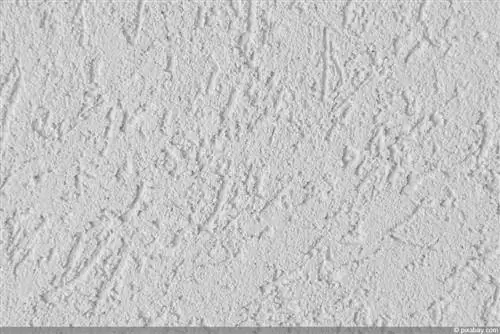
In addition to the preparatory measures themselves, you have to look carefully when selecting the individual products. The best results can only be achieved if the individual primers are matched to the mineral plaster. When building a new building, it is advisable to first select the plaster you want and purchase the appropriate primer. Of course, this is not possible with renovations. In these cases, it should be determined which primers are already available and which types of plaster go with them.
Apply
The following steps should be taken into account when applying the plaster. These are:
1. Prepare the surface
The surface should be clean, dry and free of damage. Cracks and holes must therefore be leveled out in advance with filler. Drying again is then required. For absorbent surfaces, a deep primer should also be applied.
2. Plaster base
Strictly speaking, the plaster base is still part of the preparation of the wall. It ensures that a very even and even result can be achieved afterwards. However, it is usually only necessary if interior walls are to be plastered decoratively or if plaster is to be applied. In other cases this can easily be dispensed with.
3. Covering work
The surrounding area and sensitive elements should be masked off to prevent the plaster from being accidentally applied. Window and door frames and skirting boards must be protected. To protect the floor, we recommend laying out a thick tarpaulin.
4. Mix
The mineral plaster is mixed with water. It is important to pay attention to the manufacturer's information. For smaller quantities, using a drill with a stirring attachment is sufficient. However, for larger areas to be plastered - which are mainly found outdoors - a concrete mixer can also make more sense.
5. Apply
The plaster is applied with a trowel and smoothed out. It can also be removed to achieve a particularly flat surface. Plastering strips as a basis can also help here. Plaster strips can make applying the plaster significantly easier and can also be used, for example, to level out uneven or crooked walls. Last but not least, they serve as contact surfaces for a puller. With this, excess can be removed very easily and dents will be immediately noticeable without having to measure.
6. Decoration
With decorative plastering, the structuring is added after application. This can be done using special rollers, nail boards, felt boards or a brush.
Tip:
For larger areas, at least two people should work in order to be able to apply and smooth the plaster quickly. Otherwise, drying could make plastering more difficult.
Painting mineral plasters
When painting the mineral plaster, you only need to pay attention to a few points. These are:
- Cleaning the surface: Moisture, dust and other substances that reduce adhesion should be urgently removed. It is best to vacuum the wall thoroughly and, if necessary, treat it with suitable cleaning products.
- Selecting the right color: The color must be suitable for being applied directly to plaster. In addition, it should of course be suitable for outdoor or indoor use, depending on the wall.
- Utensils: Very strongly structured plaster has high peaks and deep pores. Therefore, a high-pile paint roller is required here.
Tip:
As an alternative to painting, the plaster can also be colored directly.
Costs
From 4 euros you should expect one to three square meters of plastered wall. Of course, there are also the costs for utensils and possibly other preparatory materials, such as deep primer and filler. However, professional plastering of the walls, including preparation and covering work, should cost around 20 euros per square meter. If you plaster and paint yourself, you can save considerable sums.

